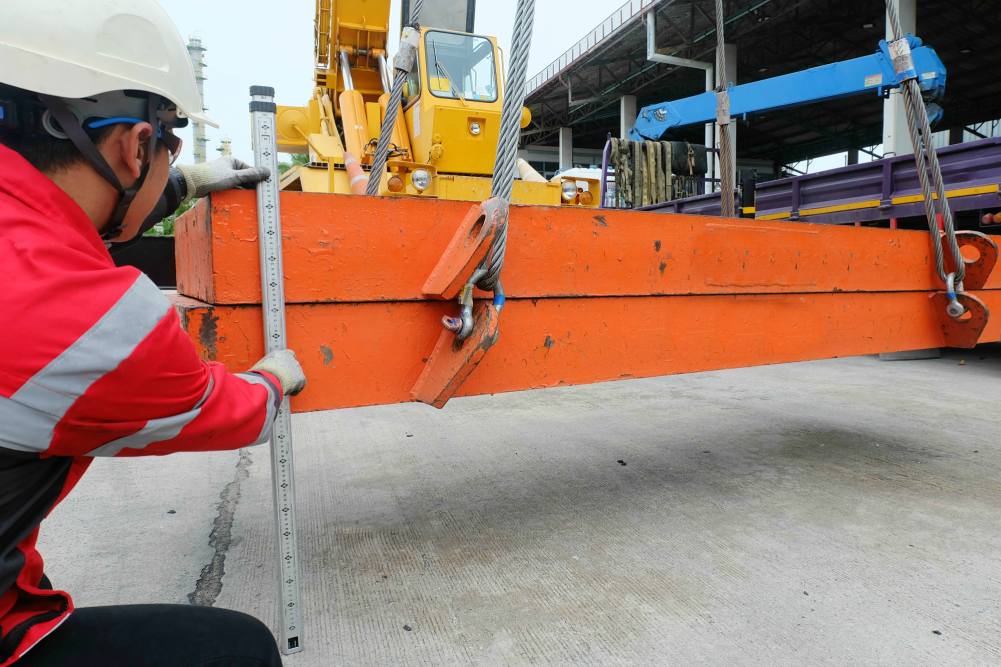OSHA Crane Inspection: Everything You Need to Know
29 August, 2020 - Editorial Team
Know more about the OSHA Crane Inspection
According to the Occupational Health and Safety Administration (OSHA) regulations, all organizations should have their cranes regularly inspected and maintained as a way of curbing possible accidents.
Compliance with these regulations should not only be done to avoid the set-out penalties, but it should be adopted as a safety measure for every manufacturing company. For this reason, you need to understand the OSHA 1910.179 standards, which cover everything you need to know about crane inspections, requirements, and other procedures.
This guide gives you an overview of everything that you should know about OSHA crane inspections.
Discover our Products
OSHA Crane Inspection Explained
OSHA is one of the three governing bodies that see the full implementation of maintenance and inspection of overhead cranes. The other authorities include the Crane Manufacturers Association of America (CMAA) and the American Society of Mechanical Engineers (ASME).
Regular usage of cranes exposes them to wear and tear, which might result in mechanical failure or breakdown.
This might put everyone at risk. Due to such unexpected risks, overhead cranes should be inspected regularly as per the OSHA crane inspection regulations as it’s established in the USA, in the same way as the LOLER regulation in the UK.
As far as crane inspections are concerned, not every inspector is qualified to inspect an overhead crane. According to CMAA, a qualified crane inspector should:
- Have a field experience of over 2000 hours.
- Be trained and equipped with knowledge of the codes and regulations of cranes.
- Be trained on the local, state, and federal codes and standards.
- Trained on the best safety practices of operating hoists and cranes.
- Be experienced in writing reports and other documentation procedures.
- Be conversant with the crane and hoist terminology.

What are the OSHA Crane Inspection Requirements?
The OSHA overhead crane inspection requirements are as follows:
- Cranes should be inspected routinely to enhance safety.
- An initial inspection should be carried out before the initial use of the crane.
- Once the overhead cranes have been placed into service, two forms of inspections should be carried out, including the periodic and the frequent inspections.
- Only a qualified OSHA inspector is authorized to carry out crane inspections.
OSHA Crane Inspection Checklist
An inspection checklist for an overhead crane will vary with the various forms of inspections. An OSHA overhead crane inspection checklist is generated from OSHA’s 1910.179 standards.
Here are sample checklists for an overhead crane:
Frequent Inspection Checklist
- Maladjustments hindering the proper functioning of a crane.
- Leakage or deterioration in hydraulic systems, pumps, valves, lines, or tanks.
- Cracked or deformed hooks.
- Defective hoist chains.
- Excessive wear of components.
- Malfunctioning wire rope reeving system.
Periodic Inspection Checklist
- Wear and tear of tires
- Deterioration in electrical apparatus such as push-button stations, limit switches, and controller contactors.
- Deterioration of the chain drive sprockets
- Overstretch of chains
- Unsafe or faulty power plants
- Inaccuracy in indicators
- Wear on clutch and brake systems
- Distorted bearings
- Loose rivets or bearings
When Must Crane Inspections Take Place?
Contrary to what most plant managers and maintenance supervisors think, a crane should be inspected regularly and not just once every year.
There are four categories of crane inspections, according to the American National Standards Institute (AMNSI), including initial, periodic, frequent, and functional test inspections. The inspection checklists for all these categories, however, will depend on whether the crane in question is regularly or irregularly used.
Cranes in Regular Service
These are cranes that are in operation or are mobile at least once in every month. Here is a highlight of the OSHA mobile crane inspection checklist and inspection procedures for cranes in regular service.
Initial Inspections
New or modified cranes should be inspected before use to verify their compliance with OSHA standards. The inspection involves a visual check-up of the hoist, crane, or part of the equipment that has been modified, repaired, or reinstalled.
A Rated Load Test is also undertaken at this stage before the use of a new, modified, or repaired overhead crane. This is done under the supervision of an authorized person, after which an OSHA crane inspection report is written.
Functional Test Inspection
This inspection includes a check-up of the functionality of your crane every day prior to any shift. The OSHA daily crane inspection checklist entails the following:
- Maladjustments hindering the normal functioning of your crane.
- Non-compliance of the rope reeving systems.
- Distorted or worn out hoist chains
- Leaks or deterioration of parts of the hydraulic system.
- OSHA crane hook inspection

Frequent Inspection
This inspection involves a check-up of the operating mechanisms of a crane with a focus on the load chain, wire rope, braking system, and the hoist.
Frequent inspections are done on a daily or monthly basis, depending on the frequency of crane usage. The monthly or daily crane inspection from OSHA should capture the following items:
- Deformed or cracked hooks.
- Non-compliant rope reeving systems.
- Worn out operating mechanisms.
- Wears and tears in the running rope.
- Wears and tears in the hoist chains.
- Deterioration and leakage of parts of the hydraulic system.
Although a frequent inspection does not require an OSHA crane inspection certification, having it documented would be proof that it was assessed.
Periodic Inspection
How frequent periodic inspections are to be done depends on the usage of the crane. For typical services, cranes in regular service should be inspected annually. Periodic inspections must also adhere to all the OSHA annual crane inspection requirements.
This includes checking out for the following:
- Deterioration of electrical apparatus.
- Worn out chain drive sprockets.
- Worn out parts of the braking system.
- Cracked or worn out sheaves and drums.
- Loose rivets and bolts.
Cranes Not in Regular Service
Cranes that have been immobile, on standby, or irregularly used should be inspected prior to using them again. A jib crane inspection OSHA procedure for such cranes primarily involves periodic and frequent assessments.
The OSHA crane inspection frequency for cranes not in regular service depends on how long the crane has been idle. For example, a crane that has been idle between one and six months should have a frequent inspection.
On the other hand, a crane that has been idle for over six months should have a periodic inspection. A standby crane (one that is used intermittently) should have a frequent inspection.
Newsletter
Sign up for our newsletter and get the latest news from elebia
What are the OSHA Maintenance Requirements?
The maintenance requirements outlined by OSHA regulations include the following:
- Implementation of a preventive maintenance program must adhere to the manufacturer’s recommendations.
- Maintenance of unsafe conditions and deteriorating components captured in the inspection report must be completed before the crane is used for service.
- Cranes should be de-energized using the OSHA requirements on the lockout or control of hazardous energy.
There are numerous accidents linked to faulty cranes. To avoid such accidents and other risks, the Occupational Health and Safety Administration (OSHA) provides inspection and maintenance guidelines that enforce the safe use of cranes.
Depending on the frequency of usage of a crane, the OSHA standards require maintenance supervisors and plant managers to undertake four categories of inspections. These include initial, periodic, frequent, and functional test inspections.
At elebia, we believe these inspections are necessary to assess the condition of various components of the crane, including the hydraulic system, the braking system, electrical apparatus, reeving rope system, and hoist chains.
Cranes that are not in regular service should also be inspected before use. Most importantly, maintenance and inspection of cranes should comply with OSHA’s maintenance and inspection requirements. Learn about our entire range of automatic crane hooks.



